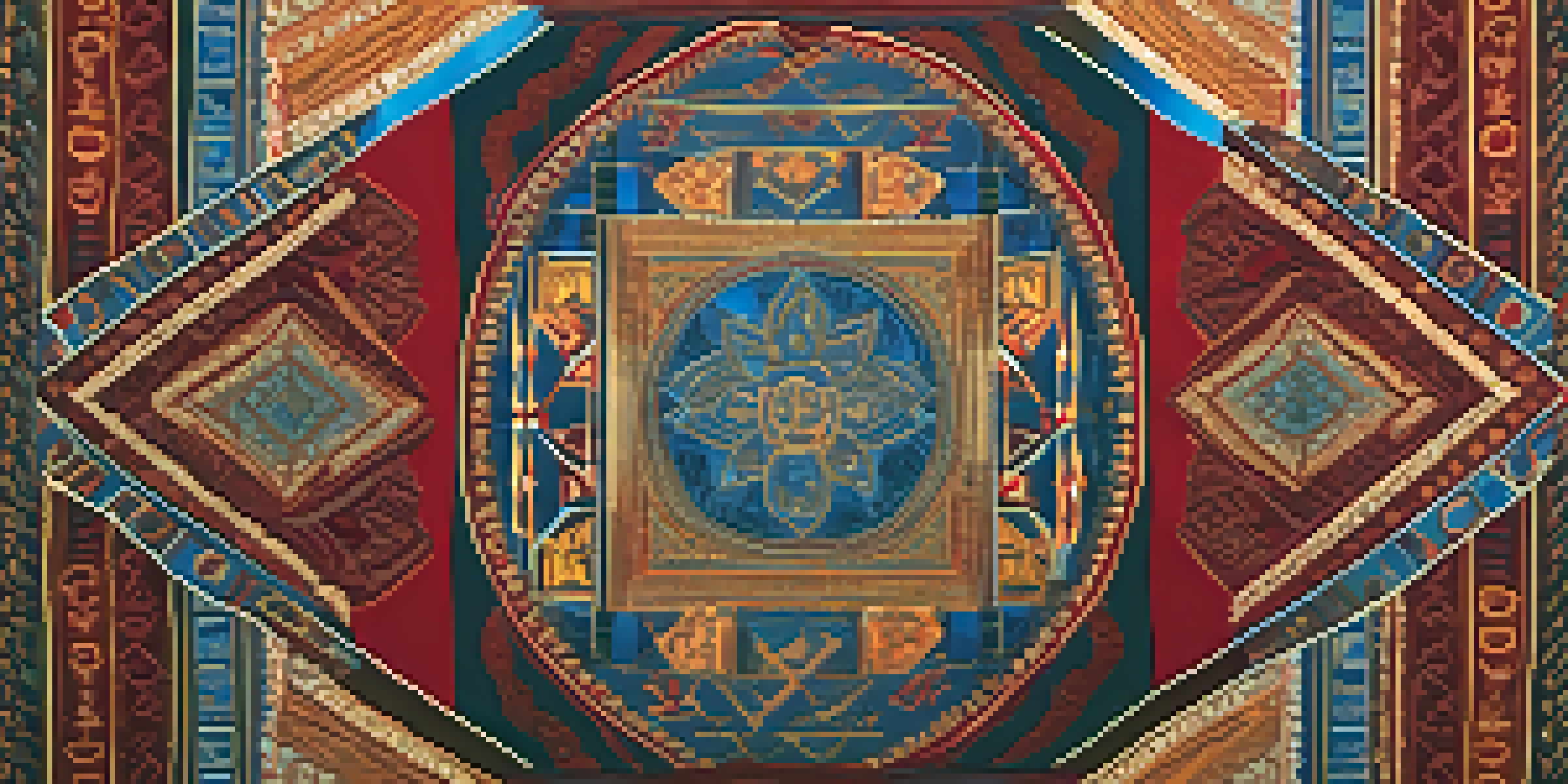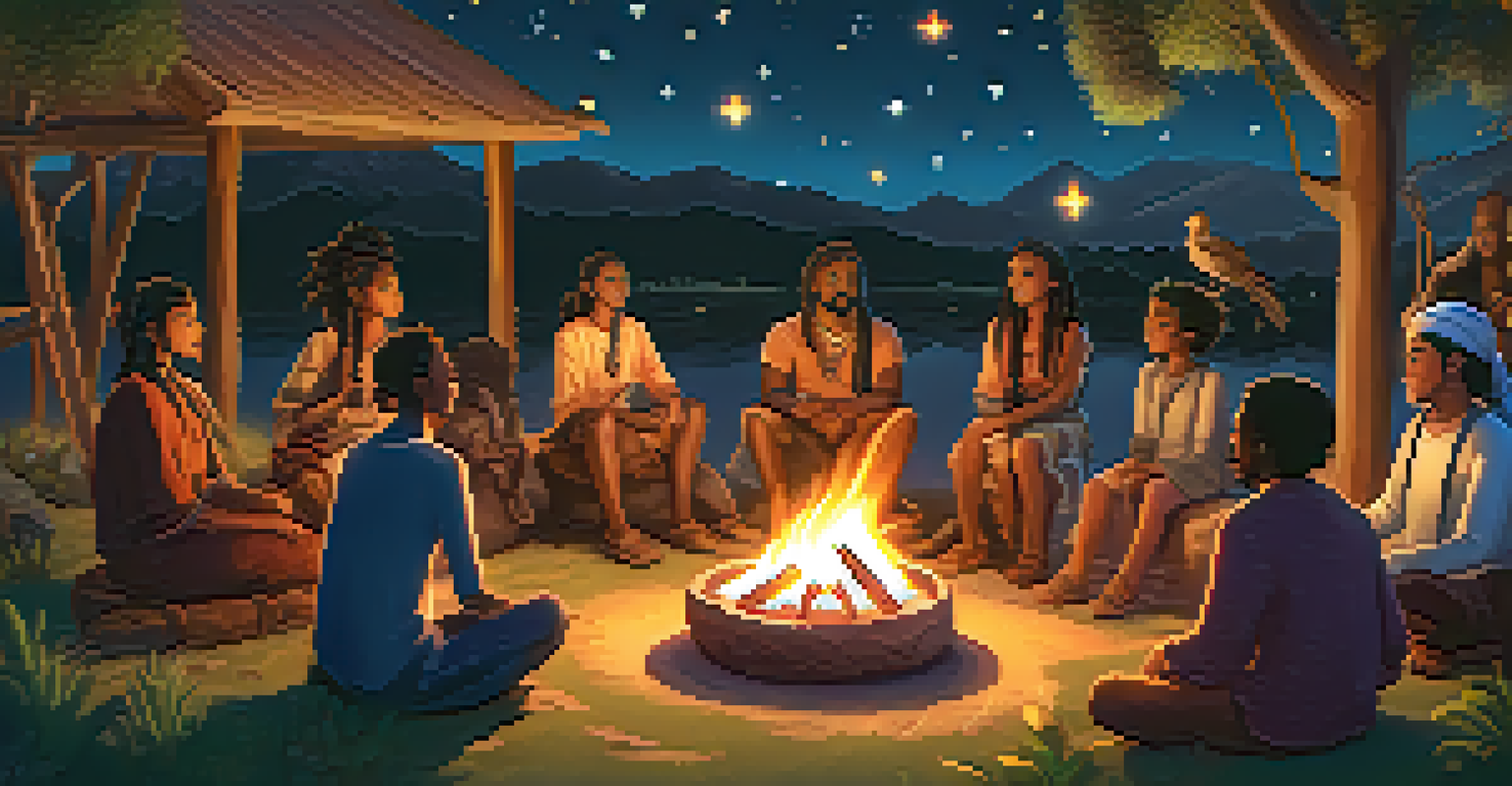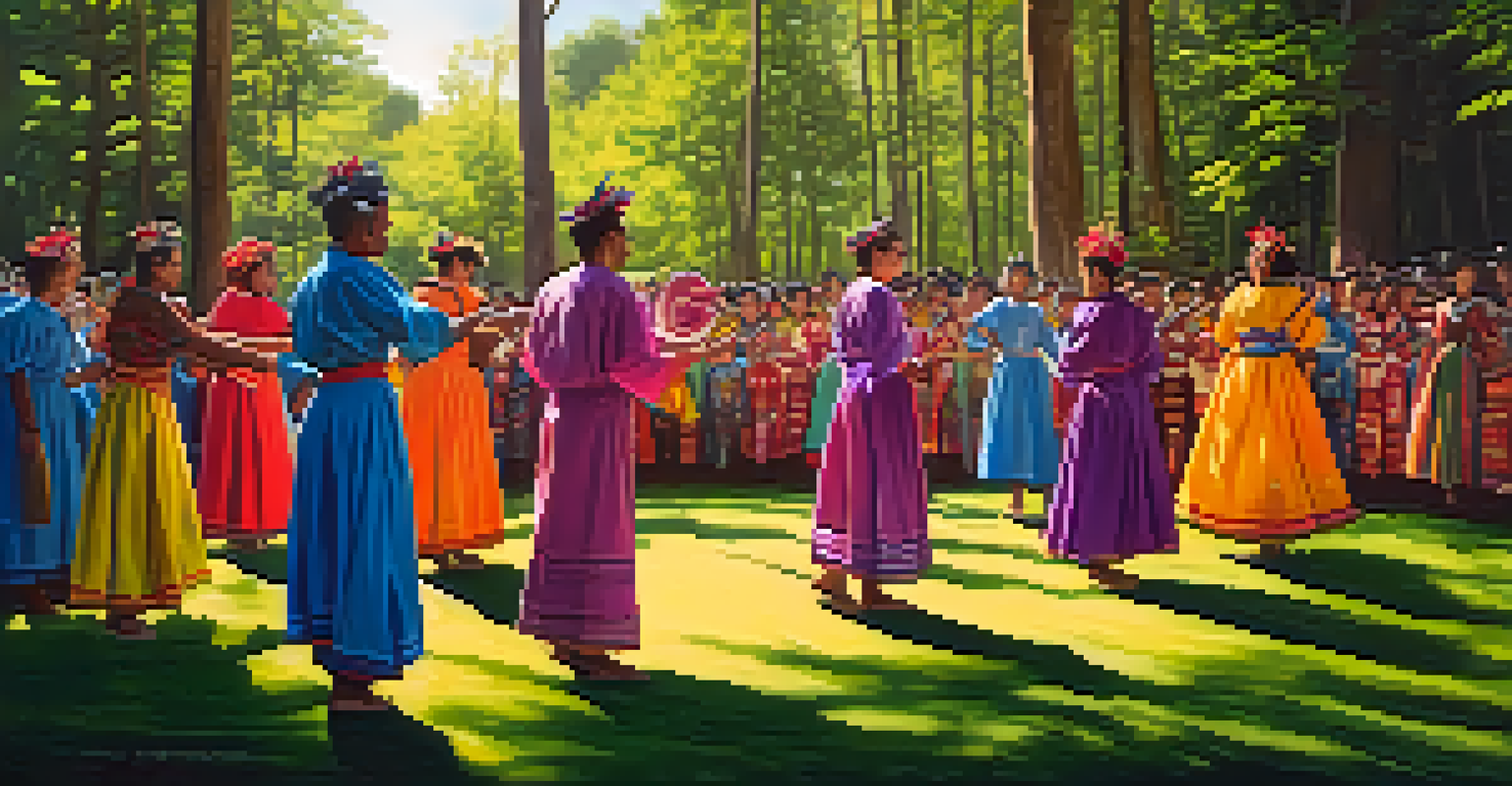Folkloric Themes in Contemporary Artistic Practices and Trends

The Resurgence of Folklore in Contemporary Art
In recent years, there has been a captivating return to folkloric themes in contemporary art. Artists are increasingly drawing inspiration from traditional stories, myths, and cultural practices. This resurgence reflects a desire to reconnect with heritage and explore identity in a rapidly changing world. By weaving folklore into their work, artists create a bridge between the past and present, allowing audiences to rediscover lost narratives.
Art is the most beautiful of all lies; it is a reflection of the truth we are willing to confront.
For example, many artists incorporate local legends into their paintings and sculptures, transforming them into visual narratives that resonate with modern viewers. This not only honors cultural history but also encourages dialogue about its relevance today. As a result, folkloric themes become a canvas for exploring contemporary issues such as migration, identity, and social justice.
Moreover, this trend highlights how folklore can serve as a source of resilience and empowerment. By retelling old stories through a modern lens, artists offer fresh perspectives that challenge stereotypes and promote inclusivity. The blend of tradition and innovation creates a vibrant artistic landscape that celebrates diversity while fostering a sense of belonging.
Artistic Mediums Embracing Folkloric Elements
Folkloric themes are not confined to just one artistic medium; they flourish across various forms of expression. From paintings and sculptures to textiles and digital art, artists are finding unique ways to incorporate traditional motifs and narratives. For instance, textile artists often use patterns that reflect their cultural backgrounds, telling stories through fabric that resonates with viewers on a personal level.

Digital art is also embracing folklore, with contemporary artists using technology to reinterpret age-old tales. This fusion of tradition with modern tools allows for innovative storytelling methods that reach wider audiences. By utilizing social media and online platforms, these artists can share their work globally, sparking interest in the folklore that inspires them.
Folklore Bridges Past and Present
Contemporary artists are integrating folkloric themes to reconnect with heritage and explore modern identity.
In addition, performance art has seen a rise in folkloric influences, where artists reenact traditional rituals or narratives to evoke emotional responses. This not only preserves cultural practices but also invites audiences to engage with them in new ways. The interplay between different mediums showcases the versatility of folklore in contemporary artistic practices.
Storytelling: The Heart of Folkloric Art
At its core, folkloric art is about storytelling, a timeless human tradition that transcends generations. Artists who incorporate folkloric themes often focus on narratives that speak to shared experiences and universal truths. This ability to tap into collective memory makes their work relatable and impactful, allowing audiences to connect emotionally with the stories being told.
Folklore is the heart of the people, a living history that connects us to our past and guides our future.
Consider the work of artists who use visual storytelling techniques, such as comic art or graphic novels, to depict folklore. These formats not only make the stories accessible but also engage younger audiences who might be unfamiliar with traditional tales. By reimagining folklore in contemporary formats, artists keep these narratives alive and relevant.
Furthermore, storytelling through art fosters community. It brings people together to share their own experiences and interpretations, creating a rich dialogue around cultural heritage. As these stories evolve, they continue to inspire new generations, ensuring that folklore remains an integral part of contemporary artistic practices.
Cultural Identity and Folkloric Expressions
Cultural identity plays a significant role in shaping how artists express folkloric themes. For many, these themes serve as a means of exploring personal and collective identities, allowing them to navigate their place in the world. By drawing on their cultural backgrounds, artists can challenge dominant narratives and highlight the richness of their experiences.
For example, Indigenous artists often incorporate traditional stories and symbols into their work to reclaim their narratives. This act of reclamation not only honors their heritage but also raises awareness about the ongoing impact of colonization. Through their art, they invite audiences to reflect on history and understand the importance of preserving cultural identity.
Diverse Mediums Embrace Folklore
Folkloric elements are being expressed through various artistic forms, including digital art and performance, showcasing their versatility.
Additionally, artists from multicultural backgrounds use folklore to celebrate diversity and foster cross-cultural dialogues. By blending various folkloric elements into their work, they create new narratives that resonate with a broader audience. This celebration of diversity enriches the artistic landscape and emphasizes the importance of inclusivity in contemporary art.
The Role of Technology in Folkloric Art
Technology has transformed the way folkloric themes are expressed in contemporary art, offering new tools and platforms for artists. Digital mediums allow for innovative storytelling techniques that can reach a global audience. Artists can now share their work through social media, virtual galleries, and interactive installations, making folklore more accessible than ever.
Moreover, technology enables the preservation of traditional art forms, ensuring they are not lost to time. For example, 3D scanning and printing can replicate traditional crafts, allowing artists to explore and reinterpret these techniques in modern contexts. This fusion of technology and tradition creates exciting opportunities for experimentation and creativity.
As artists continue to embrace technology, they also face challenges in maintaining authenticity. It becomes essential to balance innovation with respect for cultural heritage, ensuring that the essence of folklore is preserved. This ongoing dialogue between tradition and technology is shaping the future of folkloric art in fascinating ways.
Global Perspectives: Folklore in Art Worldwide
Folkloric themes in contemporary art are a global phenomenon, with artists from various cultures interpreting and integrating their traditions into their work. This diversity enriches the artistic landscape and fosters a greater understanding of different cultural narratives. From African textiles to Asian ceramics, each region brings its unique stories and aesthetics to the forefront.
For instance, Latin American artists often blend indigenous myths with contemporary issues, creating powerful visual statements that resonate with local and global audiences. These artworks not only celebrate cultural heritage but also address social and political challenges faced by their communities. This approach highlights the relevance of folklore in addressing contemporary realities.
Global Perspectives on Folklore
Artists worldwide are interpreting folklore in ways that reflect their unique cultural narratives, enriching the global artistic landscape.
Furthermore, international art exhibitions and festivals provide platforms for artists to showcase their folkloric-inspired work. This not only raises awareness of diverse cultural expressions but also encourages collaboration and exchange between artists from different backgrounds. As a result, folkloric themes continue to evolve, reflecting the dynamic nature of global artistic practices.
The Future of Folkloric Themes in Art
As contemporary art continues to evolve, the incorporation of folkloric themes is likely to grow even more pronounced. Artists are increasingly recognizing the power of folklore to address pressing social issues and foster community engagement. This trend suggests a promising future where traditional narratives can inspire new dialogues and creative expressions.
Moreover, emerging artists are becoming more aware of the importance of cultural sensitivity and authenticity in their work. As they navigate the complexities of representation, they are challenged to honor the traditions they draw from while innovating in their artistic practice. This balance will be crucial in shaping the future of folkloric art.

Ultimately, the continued exploration of folkloric themes will enrich contemporary art, offering fresh perspectives and fostering connections among diverse cultures. As artists embrace their heritage and share their stories, they contribute to a vibrant artistic landscape that values tradition while looking forward to new possibilities.